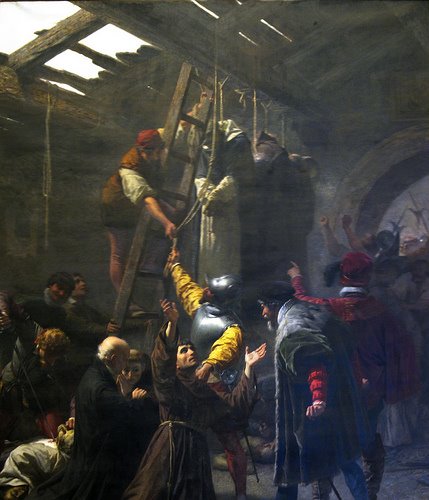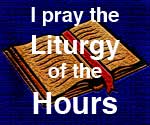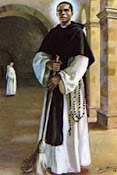 Today we remember the Dominican martyr St. John of Cologne and the other 18 Martyrs of Gorkum, all priests and religious.
Today we remember the Dominican martyr St. John of Cologne and the other 18 Martyrs of Gorkum, all priests and religious.Previous to his martyrdom, all that we know of the life of St. John of Gorkum can be quickly told. He was a religious of his convent of Cologne who performed the duties of a parish priest in Holland, which was at that time engaged in a death struggle with the Spanish princes. The place and date of his birth are not known; those of his death will never be forgotten.
Anti Spanish and Protestant soldiers banded themselves into lawless armies of pirates, and, unpaid and disillusioned, foraged for themselves in the seaports, looking for plunder. Reproached by the clergy, they turned on the Church and one band of pirates laid siege to the city of Gorkum, capturing it after a struggle. For reprisal because of the city's determined defense they gathered all members of the clergy in Gorkum into one miserable prison and set about taking revenge on the priests for their own grievances against the Spanish crown. Hearing of the plight of these poor priests, John left the comparative safety of his parish and entered Gorkum in disguise in order to give whatever assistance he might. Several times he entered the city to dispense the sacraments, and to bring consolation to the priests who were being cruelly tortured. Eventually, he also was taken prisoner and subjected to torture.
Angered by the endurance of the priests, the pirates increased their abuses. Some of the religious were very old and infirm, but one and all, even to an aged Augustinian who was so weak he could barely stand, they bore their martyrdom with patience and sweetness for ten terrible days and nights. They were repeatedly asked to deny the Real Presence, and just as repeatedly refused, which brought on more and more dreadful tortures. Finally they were thrown into the hold of a ship, and they were taken to another city to be killed in the presence of a Protestant nobleman, a man noted for his hatred of Catholicism.
Eleven Franciscans, a Premonstratensian, an Augustinian and four secular priests suffered with John of Cologne the long anguish of protracted martyrdom. Two of the number had been far from exemplary in their lives, but by their heroic constancy at the hour of trial blotted out the stains that might otherwise have kept them out of heaven. But, sadly, there should have been twenty martyrs of Gorkum. One, who weakened and was released after he had denied the Real Presence, lived but twenty four hours to enjoy his wretched freedom. The other nineteen gloriously went to heaven.
The martyrs, after being exhibited to the curious townspeople (who paid to see the spectacle) and subjected to every manner of torture, were finally hanged in an old barn, amid the jeers of the mob. Stripped of their habits and made, like their Master, "the reproach of men and the outcast of the people," they benefitted by their Christ like sufferings and detachment and died a Christ like death.
Their bodies, mutilated both before and after death, were callously thrown into a ditch.
The scene of their martyrdom soon became a place of pilgrimage, where all the Christian world did reverence to the men who were so courageously obedient unto death. Accounts of several miracles, performed through the martyrs’ intercession and relics, were used for their beatification. Most of their relics are kept in the Franciscan church at Brussels to which they were secretly conveyed from Briel in 1616.
(Source : Dorcy, Marie Jean. St. Dominic's Family. Tan Books and Publishers, 1983, The Order of Preachers)

Painting depicting the Martyrs of Gorkum










